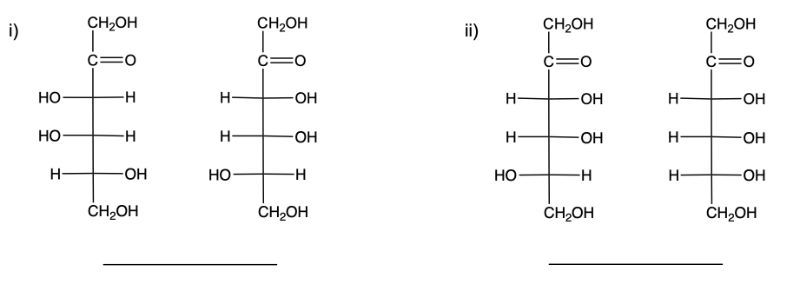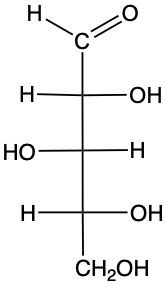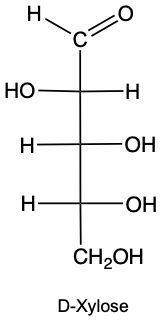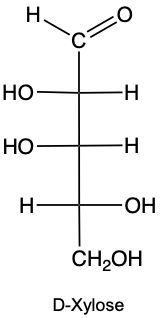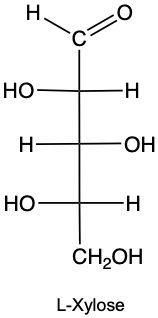In this video, we're going to take a look at enantiomers versus diastereomers. Now, first recall that stereoisomers have the same molecular formula and connectivity, but different spatial orientation. When we talk about enantiomers, enantiomers themselves are chiral molecules with non-superimposable mirror images of each other. Basically, this means when you're comparing two chiral molecules to one another, when they have opposite configurations of each other at all their chiral centers, they are enantiomers of each other. Diastereomers. Diastereomers are stereoisomers that are not mirror images of each other. So, how do you tell if two things are diastereomers of each other? Well, when you're comparing the two to each other, some of the chiral centers will be the same in both structures, and some of them will be different. That's how we're able to tell the difference between diastereomers and enantiomers. Enantiomers, all the chiral centers are different from each other. Diastereomers, some of the chiral centers change, and some of them are the same. So, if we take a look here, we have two chiral centers here and here. And if we look right next to it, we have this structure which has two chiral centers as well. The OHs are on the opposite side. If you were to imagine a mirror was here, and this was to look into the mirror, it would see this structure here as its reflection. So, they are mirror images of each other; they are enantiomers. Then, if we compare, let's say that this is structure a, we'll say this is b, let's say this is c, and then let's say this one over here is d. If we compared a to c, what do we recognize? We recognize here that this chiral center, the OH is on the right. This chiral center, the OH is still on the right. They're the same. But if we look at the second chiral center, the OHs are on different sides. So, one chiral center stayed the same, and one changed. They would be diastereomers of each other. Then if we looked at c and d, imagine there's a mirror here, this looks into the mirror, it would see D as its reflection. So these two are enantiomers of each other. Again, enantiomers are mirror images of each other, meaning their chiral centers are opposite at all chiral centers from each other. Diastereomers are non-mirror images; they're still stereoisomers. That just means that if you're comparing two structures, in both structures, some of the chiral centers will be the same, some will be different. Now, connected to this is the number of stereoisomers, and that's the formula 2n, where n equals our number of chiral centers. So, if we take a look here, let's say we're looking at structure A, and they only gave me structure A, and they asked how many possible stereoisomers exist from structure A? It has two chiral centers, so it'd be 22, which would mean that we have a possibility of four stereoisomers, which is what we see. We see A, B, C, and D, four different stereoisomers from the fact that structure A had two chiral centers to begin with. Alright. So, just keep this in mind when we're talking about enantiomers versus diastereomers and trying to determine the total number of stereoisomers.
- 1. Matter and Measurements4h 29m
- What is Chemistry?5m
- The Scientific Method9m
- Classification of Matter16m
- States of Matter8m
- Physical & Chemical Changes19m
- Chemical Properties8m
- Physical Properties5m
- Intensive vs. Extensive Properties13m
- Temperature (Simplified)9m
- Scientific Notation13m
- SI Units (Simplified)5m
- Metric Prefixes24m
- Significant Figures (Simplified)11m
- Significant Figures: Precision in Measurements7m
- Significant Figures: In Calculations19m
- Conversion Factors (Simplified)15m
- Dimensional Analysis22m
- Density12m
- Specific Gravity9m
- Density of Geometric Objects19m
- Density of Non-Geometric Objects9m
- 2. Atoms and the Periodic Table5h 23m
- The Atom (Simplified)9m
- Subatomic Particles (Simplified)12m
- Isotopes17m
- Ions (Simplified)22m
- Atomic Mass (Simplified)17m
- Atomic Mass (Conceptual)12m
- Periodic Table: Element Symbols6m
- Periodic Table: Classifications11m
- Periodic Table: Group Names8m
- Periodic Table: Representative Elements & Transition Metals7m
- Periodic Table: Elemental Forms (Simplified)6m
- Periodic Table: Phases (Simplified)8m
- Law of Definite Proportions9m
- Atomic Theory9m
- Rutherford Gold Foil Experiment9m
- Wavelength and Frequency (Simplified)5m
- Electromagnetic Spectrum (Simplified)11m
- Bohr Model (Simplified)9m
- Emission Spectrum (Simplified)3m
- Electronic Structure4m
- Electronic Structure: Shells5m
- Electronic Structure: Subshells4m
- Electronic Structure: Orbitals11m
- Electronic Structure: Electron Spin3m
- Electronic Structure: Number of Electrons4m
- The Electron Configuration (Simplified)22m
- Electron Arrangements5m
- The Electron Configuration: Condensed4m
- The Electron Configuration: Exceptions (Simplified)12m
- Ions and the Octet Rule9m
- Ions and the Octet Rule (Simplified)8m
- Valence Electrons of Elements (Simplified)5m
- Lewis Dot Symbols (Simplified)7m
- Periodic Trend: Metallic Character4m
- Periodic Trend: Atomic Radius (Simplified)7m
- 3. Ionic Compounds2h 18m
- Periodic Table: Main Group Element Charges12m
- Periodic Table: Transition Metal Charges6m
- Periodic Trend: Ionic Radius (Simplified)5m
- Periodic Trend: Ranking Ionic Radii8m
- Periodic Trend: Ionization Energy (Simplified)9m
- Periodic Trend: Electron Affinity (Simplified)8m
- Ionic Bonding6m
- Naming Monoatomic Cations6m
- Naming Monoatomic Anions5m
- Polyatomic Ions25m
- Naming Ionic Compounds11m
- Writing Formula Units of Ionic Compounds7m
- Naming Ionic Hydrates6m
- Naming Acids18m
- 4. Molecular Compounds2h 18m
- Covalent Bonds6m
- Naming Binary Molecular Compounds6m
- Molecular Models4m
- Bonding Preferences6m
- Lewis Dot Structures: Neutral Compounds (Simplified)8m
- Multiple Bonds4m
- Multiple Bonds (Simplified)6m
- Lewis Dot Structures: Multiple Bonds10m
- Lewis Dot Structures: Ions (Simplified)8m
- Lewis Dot Structures: Exceptions (Simplified)12m
- Resonance Structures (Simplified)5m
- Valence Shell Electron Pair Repulsion Theory (Simplified)4m
- Electron Geometry (Simplified)8m
- Molecular Geometry (Simplified)11m
- Bond Angles (Simplified)11m
- Dipole Moment (Simplified)15m
- Molecular Polarity (Simplified)7m
- 5. Classification & Balancing of Chemical Reactions3h 17m
- Chemical Reaction: Chemical Change5m
- Law of Conservation of Mass5m
- Balancing Chemical Equations (Simplified)13m
- Solubility Rules16m
- Molecular Equations18m
- Types of Chemical Reactions12m
- Complete Ionic Equations18m
- Calculate Oxidation Numbers15m
- Redox Reactions17m
- Spontaneous Redox Reactions8m
- Balancing Redox Reactions: Acidic Solutions17m
- Balancing Redox Reactions: Basic Solutions17m
- Balancing Redox Reactions (Simplified)13m
- Galvanic Cell (Simplified)16m
- 6. Chemical Reactions & Quantities2h 35m
- 7. Energy, Rate and Equilibrium3h 46m
- Nature of Energy6m
- First Law of Thermodynamics7m
- Endothermic & Exothermic Reactions7m
- Bond Energy14m
- Thermochemical Equations12m
- Heat Capacity19m
- Thermal Equilibrium (Simplified)8m
- Hess's Law23m
- Rate of Reaction11m
- Energy Diagrams12m
- Chemical Equilibrium7m
- The Equilibrium Constant14m
- Le Chatelier's Principle23m
- Solubility Product Constant (Ksp)17m
- Spontaneous Reaction10m
- Entropy (Simplified)9m
- Gibbs Free Energy (Simplified)18m
- 8. Gases, Liquids and Solids3h 25m
- Pressure Units6m
- Kinetic Molecular Theory14m
- The Ideal Gas Law18m
- The Ideal Gas Law Derivations13m
- The Ideal Gas Law Applications6m
- Chemistry Gas Laws16m
- Chemistry Gas Laws: Combined Gas Law12m
- Standard Temperature and Pressure14m
- Dalton's Law: Partial Pressure (Simplified)13m
- Gas Stoichiometry18m
- Intermolecular Forces (Simplified)19m
- Intermolecular Forces and Physical Properties11m
- Atomic, Ionic and Molecular Solids10m
- Heating and Cooling Curves30m
- 9. Solutions4h 10m
- Solutions6m
- Solubility and Intermolecular Forces18m
- Solutions: Mass Percent6m
- Percent Concentrations10m
- Molarity18m
- Osmolarity15m
- Parts per Million (ppm)13m
- Solubility: Temperature Effect8m
- Intro to Henry's Law4m
- Henry's Law Calculations12m
- Dilutions12m
- Solution Stoichiometry14m
- Electrolytes (Simplified)13m
- Equivalents11m
- Molality15m
- The Colligative Properties15m
- Boiling Point Elevation16m
- Freezing Point Depression9m
- Osmosis16m
- Osmotic Pressure9m
- 10. Acids and Bases3h 29m
- Acid-Base Introduction11m
- Arrhenius Acid and Base6m
- Bronsted Lowry Acid and Base18m
- Acid and Base Strength17m
- Ka and Kb12m
- The pH Scale19m
- Auto-Ionization9m
- pH of Strong Acids and Bases9m
- Acid-Base Equivalents14m
- Acid-Base Reactions7m
- Gas Evolution Equations (Simplified)6m
- Ionic Salts (Simplified)23m
- Buffers25m
- Henderson-Hasselbalch Equation16m
- Strong Acid Strong Base Titrations (Simplified)10m
- 11. Nuclear Chemistry56m
- BONUS: Lab Techniques and Procedures1h 38m
- BONUS: Mathematical Operations and Functions47m
- 12. Introduction to Organic Chemistry1h 34m
- 13. Alkenes, Alkynes, and Aromatic Compounds2h 12m
- 14. Compounds with Oxygen or Sulfur1h 6m
- 15. Aldehydes and Ketones1h 1m
- 16. Carboxylic Acids and Their Derivatives1h 11m
- 17. Amines38m
- 18. Amino Acids and Proteins1h 51m
- 19. Enzymes1h 37m
- 20. Carbohydrates1h 46m
- Intro to Carbohydrates4m
- Classification of Carbohydrates4m
- Fischer Projections4m
- Enantiomers vs Diastereomers8m
- D vs L Enantiomers8m
- Cyclic Hemiacetals8m
- Intro to Haworth Projections4m
- Cyclic Structures of Monosaccharides11m
- Mutarotation4m
- Reduction of Monosaccharides10m
- Oxidation of Monosaccharides7m
- Glycosidic Linkage14m
- Disaccharides7m
- Polysaccharides7m
- 21. The Generation of Biochemical Energy2h 8m
- 22. Carbohydrate Metabolism2h 22m
- 23. Lipids2h 26m
- Intro to Lipids6m
- Fatty Acids25m
- Physical Properties of Fatty Acids6m
- Waxes4m
- Triacylglycerols12m
- Triacylglycerol Reactions: Hydrogenation8m
- Triacylglycerol Reactions: Hydrolysis13m
- Triacylglycerol Reactions: Oxidation7m
- Glycerophospholipids15m
- Sphingomyelins13m
- Steroids15m
- Cell Membranes7m
- Membrane Transport10m
- 24. Lipid Metabolism1h 45m
- 25. Protein and Amino Acid Metabolism1h 37m
- 26. Nucleic Acids and Protein Synthesis2h 54m
- Intro to Nucleic Acids4m
- Nitrogenous Bases16m
- Nucleoside and Nucleotide Formation9m
- Naming Nucleosides and Nucleotides13m
- Phosphodiester Bond Formation7m
- Primary Structure of Nucleic Acids11m
- Base Pairing10m
- DNA Double Helix6m
- Intro to DNA Replication20m
- Steps of DNA Replication11m
- Types of RNA10m
- Overview of Protein Synthesis4m
- Transcription: mRNA Synthesis9m
- Processing of pre-mRNA5m
- The Genetic Code6m
- Introduction to Translation7m
- Translation: Protein Synthesis18m
Enantiomers vs Diastereomers - Online Tutor, Practice Problems & Exam Prep
 Created using AI
Created using AIStereoisomers have the same molecular formula and connectivity but differ in spatial orientation. Enantiomers are chiral molecules that are non-superimposable mirror images, with opposite configurations at all chiral centers. In contrast, diastereomers are stereoisomers that are not mirror images, sharing some chiral centers while differing in others. The number of stereoisomers can be calculated using the formula , where
Enantiomers vs Diastereomers Concept 1
Video transcript
Enantiomers vs Diastereomers Example 1
Video transcript
Circle all chiral centers in the following monosaccharide and state the number of possible stereoisomers. So remember, a chiral center is where we have a carbon connected to four different groups. If we're to take a look here, our chiral centers would be three chiral centers. And we know that those are the chiral centers because those are carbons connected to four different groups. This carbon here is not a chiral center because it is forming a double bond, so it can't make four individual single bonds. This Carbon here is connected to two Hydrogens, so it can't have four different groups. And same with this one. So again, we have three chiral centers here, and the number of possible stereoisomers is based on the formula 2n, where n is the number of chiral centers. So this will be 23, which is 2 times 2 times 2, which means we have a total of 8 possible stereoisomers from this original monosaccharide. So those will be our two answers. Three chiral centers with a possibility of 8 total stereoisomers.
Identify each pair of carbohydrates as enantiomers or diastereomers.
diastereomer, enantiomer
enantiomer, diastereomer
enantiomer, enantiomer
diastereomer, diastereomer
Draw the enantiomer of given structure of Xylose, and identify as D or L.
Do you want more practice?
Here’s what students ask on this topic:
What is the difference between enantiomers and diastereomers?
Enantiomers are chiral molecules that are non-superimposable mirror images of each other, meaning they have opposite configurations at all chiral centers. In contrast, diastereomers are stereoisomers that are not mirror images of each other. They share some chiral centers while differing in others. This distinction is crucial in stereochemistry, as enantiomers have identical physical properties except for their interaction with plane-polarized light and reactions in chiral environments, whereas diastereomers can have different physical and chemical properties.
 Created using AI
Created using AIHow can you determine if two molecules are enantiomers?
To determine if two molecules are enantiomers, you need to check if they are non-superimposable mirror images of each other. This means that they must have opposite configurations at all chiral centers. If you can place a mirror between the two molecules and they appear as mirror images, then they are enantiomers. Additionally, enantiomers will have identical physical properties except for their optical activity, where they will rotate plane-polarized light in opposite directions.
 Created using AI
Created using AIHow do you identify diastereomers among stereoisomers?
Diastereomers are identified by comparing the configurations at each chiral center. Unlike enantiomers, diastereomers are not mirror images of each other. Some chiral centers will have the same configuration, while others will differ. For example, if two molecules have two chiral centers, and one chiral center is the same while the other is different, they are diastereomers. This partial similarity and difference in chiral centers distinguish diastereomers from enantiomers.
 Created using AI
Created using AIWhat is the formula to calculate the number of stereoisomers for a molecule?
The number of stereoisomers for a molecule can be calculated using the formula , where is the number of chiral centers in the molecule. For example, if a molecule has 2 chiral centers, the number of possible stereoisomers is = 4. This formula helps in understanding the complexity and diversity of stereoisomers in organic compounds.
 Created using AI
Created using AIWhy are enantiomers important in pharmaceuticals?
Enantiomers are crucial in pharmaceuticals because they can have different biological activities. One enantiomer of a drug may be therapeutically beneficial, while the other could be inactive or even harmful. This is due to the chiral nature of biological systems, which can interact differently with each enantiomer. Therefore, understanding and controlling the enantiomeric composition of drugs is essential for their safety and efficacy.
 Created using AI
Created using AIYour GOB Chemistry tutor
- Aldoheptoses have five chiral carbon atoms. What is the maximum possible number of aldoheptose stereoisomers? ...
- Only three stereoisomers are possible for 2,3-dibromo-2, 3-dichlorobutane. Draw them, indicating which pair ar...
- In Section 15.6, you saw that aldehydes react with reducing agents to yield primary alcohols (RCH=O → RCH₂OH)....
- Sucrose and d-glucose rotate plane-polarized light to the right; d-fructose rotates light to the left. When su...
- Identify each of the following pairs of Fischer projections as enantiomers or identical compounds: a. <IMA...
- Identify each of the following pairs of Fischer projections as enantiomers or identical compounds:a. <IMAG...
- Identify each of the following pairs of Fischer projections as enantiomers or identical compounds: (13.2, 13....
- Indicate whether each pair of Fischer projections represents enantiomers or identical structures.a. <IMAGE&...
- Draw the Fischer projection of the C3 epimer of d-glucose. Compare your structure with those in Table 6.1 and ...
- Draw the Fischer projection for the enantiomer (mirror image) of each of the following:(a) <IMAGE>d-Altr...
- Classify structures A, B, and C in the figure as being either an enantiomer or a diastereomer of d-galactose.&...
- Use the structure of d-galactose in Problem 6.15 to answer the following:(a) Draw the Fischer projection of th...
